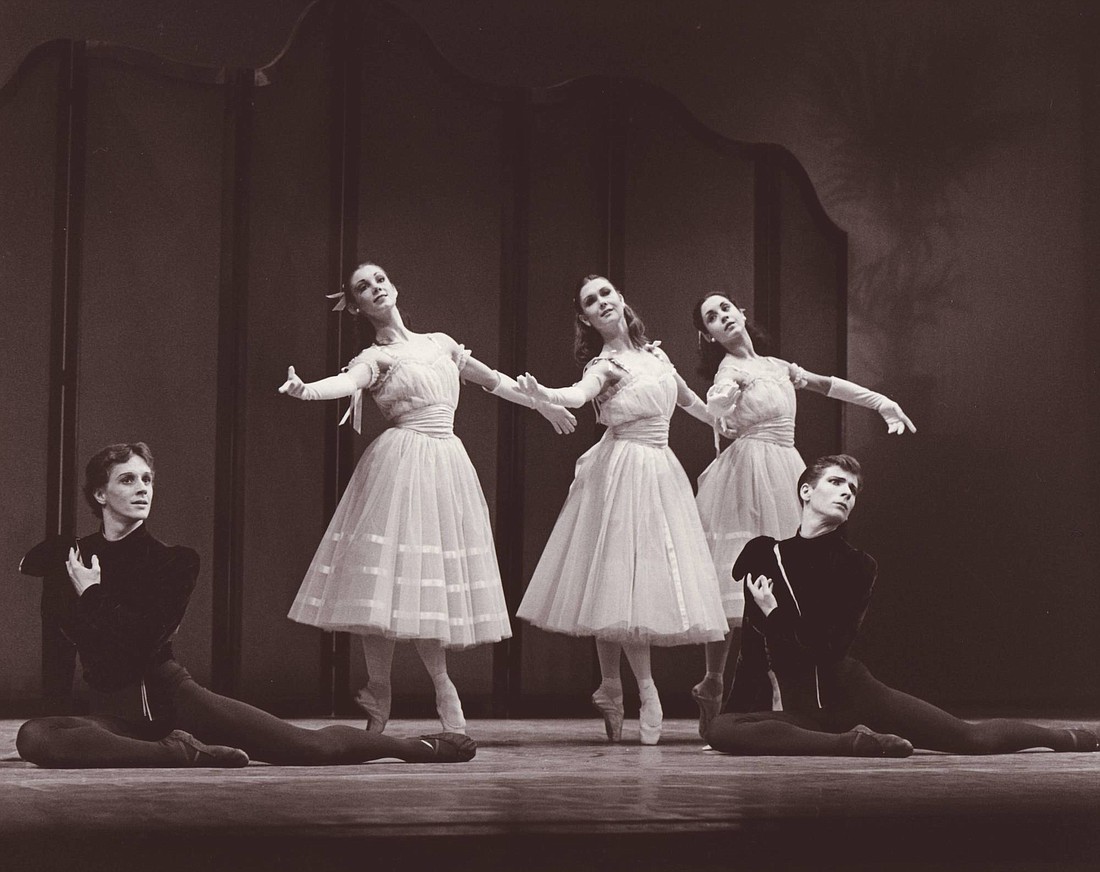- November 23, 2024
-
-
Loading

Loading

Before ballets were preserved on film or with dance notation, their longevity was much more fragile. As time went on, if a ballet wasn’t continually performed, and the choreographer or principal dancers weren’t there to recount the steps, the piece of dance risked becoming lost forever.
For 39 years, this was the case with Sir Frederick Ashton’s ballet, “Valses nobles et sentimentales.” The famed British choreographer created the ballet, a series of waltzes, for the Sadler’s Wells Theatre Ballet in 1947.
Set to a modern, jazzy score by composer Maurice Ravel and featuring stylish costumes, it was a sweeping, post-war call for a return to elegance and glamour.
After its premiere, however, it wasn’t performed again, and the ballet was considered lost.
Historian, dance archivist and critic David Vaughan, considered an expert on Ashton’s work, even wrote about the ballet being lost in his 1977 book, “Frederick Ashton and His Ballets.”
But in 1986, Sir Peter Wright revived the ballet for the Sadler’s Wells Royal Ballet. It would be Ashton’s last revival. He died just more than a year later. Dancing in the revival was a young Iain Webb — today in his 10th year as the director of the Sarasota Ballet.
In 2011, Webb and the Sarasota Ballet gave the ballet its U.S. premiere — once again saving it from the risk of being lost.
This Friday, the Sarasota Ballet will perform the work for the third time, as part of its program “Ashton, Graziano and Tuckett,” which also features revivals of resident choreographer Ricardo Graziano’s 2014 “Before Night Falls” and Will Tuckett’s “Changing Light.”
For Webb, “Valse nobles et sentimentales” is a ballet that holds a special place in his heart. But it, and the program as a whole, also represents the importance of preserving ballet’s history.
“All dancers have good muscle memory,” says Webb. “But there are some who really have the ability to look back and remember these things. More and more, though, with older ballets, these people are no longer alive. That’s the way ballets become lost. Now, things are protected much more by video and dance notation, but there’s a big cry out for a lot of these works that are being lost.”
FOND MEMORIES
After its U.S. premiere at the Sarasota Ballet in 2011, the company recently took “Valses nobles et sentimentales” to its summer performance at the Joyce Theater in New York City, where it was considered a highlight of the show. For Webb, staging the ballet is a sentimental experience — one that brings back fond memories of working alongside Ashton, with whom he had a close relationship.
“It’s always like putting on rose-tinted glasses with this ballet,” he says. “It was such an incredible experience on so many levels. Sir Fred and I always had such a great connection.”
During rehearsals for the ballet’s 1986 revival, Ashton was even there at lunch when Margaret Barbieri told her husband Webb that she was pregnant — something doctors always told her wasn’t possible. Not ready to announce the news, it was a secret they kept together — Ashton occasionally teasing Webb about it.
“I had on these pink cutoff tights,” recalls Webb. “And Sir Fred hopped off his chair at rehearsal, walked over to me and said, ‘Oh, wearing pink and going to be a father? I don’t think so.’ Then he shuffled back and sat down. We were both laughing.”
Webb mentions a photo from the original revival. In it, a young Webb can be seen posed on the floor next to Kevin O’Hare, now the director of the Royal Ballet. He laughs, fondly looking back on the experience.
“It’s so funny to see the two of us down there,” he says. “We’re actually still using my costume. I believe Logan is wearing it — I certainly can’t fit into it anymore.”
A THOUGHTFUL PROGRAM
In addition to Ashton’s ballet, the program also features revivals of Ricardo Graziano’s 2014 “Before Night Falls” and Will Tuckett’s 2013 hit “Changing Light.”
Graziano’s is a contemporary, abstract ballet, inspired by the ambient electronic music of young composer Ólafur Arnalds and exploring the stages of love — evoking the spirit of living to the fullest — before night falls.
Tuckett’s ballet, inspired by the beauty of Sarasota’s sunsets, similarly calls for feelings of hope.
Webb says the programming contains an intentionally diverse, yet complementary, selection of ballets.
“I’m in a very fortunate position here,” says Webb. “Our audience appreciates reviving older ballets. They travel here to see that. It’s great to be able to put something like that on, and then have Ricardo (Graziano) make a piece, or Will Tuckett make a piece. Then you get that combination; you introduce historians to what’s going on today, and you introduce new fans to the old stuff. It’s quite a nice statement.”